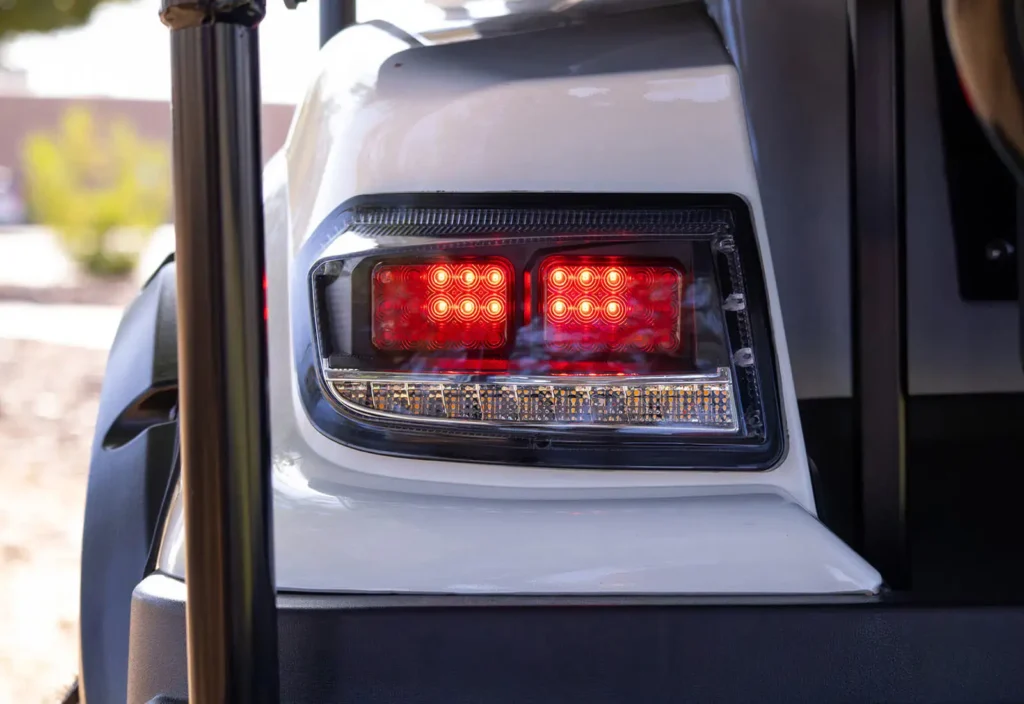Troubleshoot Golf Cart Electrical Issues

Electric golf carts are efficient, quiet, and environmentally friendly, but like any vehicle, they can experience electrical problems. From power loss to charging issues, electrical failures can quickly leave you stranded. Understanding how to identify and fix common problems is essential for any owner.
This guide explains how to approach electrical troubleshooting in a golf cart, provides a useful reference chart, and highlights when to consider professional golf cart repair or even a golf cart battery replacement.
Common Electrical Issues in Golf Carts
Dead Battery – One of the most frequent causes of electrical failure. If your cart refuses to start, your battery may need charging or replacing.
Faulty Charger – Sometimes the issue is not the battery but the charger. A defective charger will not deliver sufficient voltage.
Loose or Corroded Cables – Dirty or corroded terminals can restrict current flow.
Blown Fuses – Electrical accessories can overload circuits and blow fuses.
Solenoid Problems – A clicking sound with no movement often indicates a bad solenoid.
Controller Issues – The speed controller regulates power. Malfunctions here can cause slow acceleration or no movement.
Ignition Switch Failure – A broken switch may prevent the cart from powering on.
Step by Step Troubleshooting Guide
Check the Battery
Use a multimeter to test battery voltage. Compare readings with manufacturer specifications.
If readings are low and charging does not help, consider a golf cart battery replacement.
Inspect Wiring and Connections
Look for frayed wires, loose cables, or corrosion at terminals.
Clean terminals with a wire brush and secure all connections.
Test the Solenoid
Listen for a clicking sound when you press the accelerator. No click may mean the solenoid is faulty.
Check Fuses and Circuit Breakers
Replace any blown fuses with the correct amperage.
Evaluate the Charger
Ensure it is outputting the correct voltage. If not, replacement may be necessary.
Controller and Motor Check
If all else fails, the issue may be in the controller or motor, which usually requires professional golf cart repair.
Golf Cart Electrical Troubleshooting Reference Chart
| Problem | Possible Cause | Suggested Action |
|---|---|---|
| Cart will not start | Dead battery or bad connection | Test battery voltage and inspect cables |
| Cart charges but runs short | Weak or old battery | Replace with new batteries |
| Clicking but no movement | Faulty solenoid | Test solenoid and replace if defective |
| No charge from charger | Defective charger or wiring issue | Test charger output or replace charger |
| Lights not working | Blown fuse or wiring issue | Replace fuse and inspect wiring connections |
| Cart is slow on hills | Weak battery or motor issue | Check battery strength and schedule service if needed |
When to Seek Professional Help
While some minor fixes like cleaning terminals or replacing fuses are simple, major issues such as controller failure or complete wiring replacement should be handled by experts. Professional golf cart repair ensures safety and proper diagnosis, preventing small problems from becoming costly ones.
Contact Galaxy Golf Cars Today
FAQs on Golf Cart Electrical Troubleshooting
Why does my golf cart lose power quickly after charging?
This usually indicates weak or aging batteries. It may be time for a golf cart battery replacement.
My golf cart makes a clicking sound but will not move. What does that mean?
This is commonly caused by a faulty solenoid that needs replacement.
Can a golf cart run with one bad battery?
No. Since batteries are connected in a series, one bad unit will reduce performance for the entire pack.
What tools do I need for basic troubleshooting?
A multimeter, wire brush, and a basic toolset are essential for most electrical checks.
How often should I inspect my golf cart’s electrical system?
It is recommended to inspect batteries, wiring, and fuses every few months, or before extended use.
Is it safe to do my own electrical troubleshooting?
Yes for basic tasks like checking voltage or cleaning terminals, but more advanced repairs should be handled by a professional service technician.
Conclusion
Electrical issues in a golf cart can stem from something as simple as dirty terminals or as complex as a controller malfunction. With regular inspections, timely golf cart battery replacement, and access to professional golf cart repair when needed, you can keep your cart reliable and safe for years of use.
